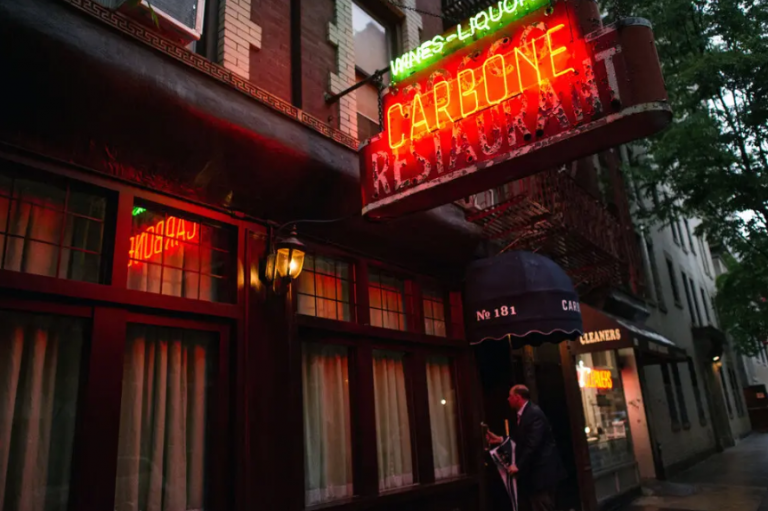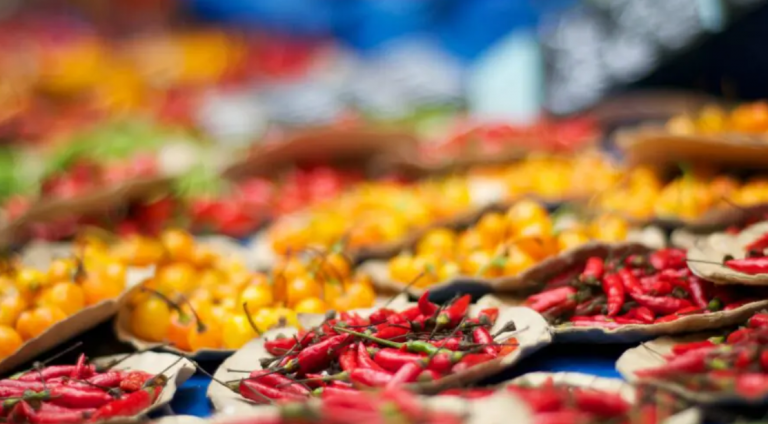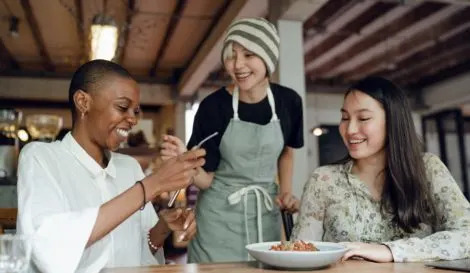By any concrete rubric, restaurants in New York City are the same as they’ve always been. All the pieces are intact – there are new, exciting restaurants; there are old, exciting restaurants. According to New York Magazine, this fall is “the busiest opening season in years”.
Since the city’s vaccine mandate was lifted back in February after nearly two years of no indoor dining and limited capacity, there are have been no formal rules at all. Things are normal. Better than normal. “Every single month is our strongest month ever,” Resy CEO, Alexander Lee, told the Atlantic; it had been true for all of 2022, he said, and he saw no signs demand for reservations would be slowing down.
It is incredible, I keep reminding myself, to talk and laugh inside a room of talking, laughing strangers, eating food I did not – probably could not – cook. So then why doesn’t it feel the same? There doesn’t seem to be any single thing that’s wrong, so much as the overarching sense that it used to be better and more fun. Didn’t it?
It’s largely a confluence of two factors – inflation and the ongoing labor shortage, two unsexy forces that are being felt in all kinds of industries. But in restaurants, they are so distinctly visible: prices are high, service is strapped. It is all almost normal. Fine. Good, even. It could go on like this forever! For diners, the experience feels – not bad, so much as limp. For chefs and servers, there is a sense of suspended animation. “We just don’t know where we’re at,” says Leah Cohen, a chef with two Manhattan restaurants – Pig & Khao, on the Lower East Side, and the newer Piggyback in Midtown. “We’re in this weird limbo phase.”
In 2020, when the world shut down, restaurants became a beacon and a cause. Suddenly, everybody was talking about the service industry, about the undocumented workers who make up as much as 40% of the city’s kitchens. All at once, everyone seemed to understand the precarity of the industry, but also the transcendence of it: people love restaurants. They missed restaurants. They missed restaurants so much they made restaurants for chipmunks. There was a giddy magic in the first days of reopening, when diners were tipping wildly, and the people venturing out were just elated to be back.
“Customers went from being pains in the asses to being like, ‘We love you guys! You’re essential workers!’” laughs Cohen. “That was very short-lived.”
While Cohen’s staff are dealing with the return of demanding diners, Cohen, as an owner, is feeling the impact of inflation first-hand across the board: ingredients are more expensive, labor is more expensive, equipment is more expensive, and as a result, dinner out is more expensive.
Cohen reports that while once she charged “maybe $36” for the half-duck, the current price is $42. Recently, the New York Times broke down the increase in costs for a restaurant in North Carolina, and their reasons: Canola oil, up 159% (the war in Ukraine); a new hot water heater, up 25% (the cost of stainless steel). Diners feel the trickle-down effect.
“That’s the price we have to charge, because that’s how much stuff costs now,” Cohen says, and even knowing that as well as anyone, she understands: it’s a lot. “When I go out to eat, and I see the bill, it’s not a shock to me, but it’s something I have to process,” she says.
Paying more would hurt less if the dining experience was uniformly stellar. I would like that to be the case – everyone would like that to be the case! – but that is not the current world. “We have not come back in a form that looks anything like what we were before Covid,” one veteran server at an high-end Italian restaurant in Manhattan told me. (Like many of the restaurant workers interviewed for this story, he asked to remain anonymous to avoid potential repercussions.) “And I think the biggest reason for that is because it’s impossible to hire staff.”
The industry-wide labor shortage is old news: in January, the Bureau of Labor Statistics noted the restaurant industry’s year-over-year quit rate was more than any other job sector, even as the hiring rate remained the same. As of September, jobs in New York City food service were still at 87% of pre-pandemic levels. Many restaurants have increased wages and reworked benefits in an attempt to attract staff, but while the improvements are long overdue, alone, they haven’t been enough.
“I mean, we hire anyone, if you’re good or bad,” says Cohen. “We just don’t have the ability not to. At some point you hire for bodies and pray and hope that some of them are good.”
In dining rooms across the city, the shift is palpable. “We had to start over from near-scratch,” says Rashaad Jones, a former captain at Eleven Madison Park, one of the city’s fanciest restaurants. “We were always hiring and always had new people coming in,” he says, “but if you have 90 people that are seasoned veterans of the restaurant training one person who’s brand new, that’s a seamless transition, versus five seasoned veterans training 150 people.”
Jones left the restaurant this summer. “It was no longer good for my body or my mental health,” he says. He’s remained in the industry, consulting on a new restaurant, and working part-time in wine.
People whose experience might have got them a back waiter job before – an entry-level position clearing and setting tables – are skipping straight to front waiter posts, the server at the high-end Italian restaurant explains; one new colleague, who’d been hired as a captain – the absolute top of the front-of-house pyramid (“that’s where the buck stops if there’s a problem”) – had only ever answered phones.
The result is that everyone is scrambling to get the new generation up to speed. “It’s very stressful,” a longtime server at a popular Brooklyn pizza spot told me. “You’re already stretched thin because you’re understaffed, so people really aren’t getting the support and the training that they need,” she says. And at the same time, “you have a lot of the veterans burning out.” Meanwhile, the kitchen line is also new, understaffed and still in training, and food is often slow, and there isn’t necessarily anyone with the institutional memory to know what a dish is meant to look like.

“It really does change the way the restaurant works,” says Sophie, 30, a longtime server at a casual fine-dining restaurant in Lower Manhattan, who estimates that about a third of people working front of house are new since the pandemic. (To speak freely, she asked to be identified by her first name only.) “It changes the culture.” It is perhaps less united that it used to be, divided by default into an old guard and a new guard, “which is kind of the opposite of what I would want in a restaurant culture, which would be solidarity and inclusivity”, she says. Jones, a classical cellist by training, likens restaurants to orchestras. “There’s all these components, but there’s a collective as well,” he says. “That whole machine is what is able to accomplish things. No one part is more important.” Or as Sophie, whose restaurant pools tips, puts it, less romantically: “We’re all making each other’s money.
“People who didn’t work at the restaurant prior to the pandemic are more real about the job,” Sophie says. “This is a restaurant job, just like my other restaurant jobs.’ Whereas a lot of folks who were there before the pandemic, myself included, are like, this is different. This is the most special restaurant job you’ll ever have.”
“I think it’s this moment. I think it’s New York,” says the pizza server, who has been struggling to motivate new colleagues. People are “just in survival mode right now”, she says. “Nobody really feels excited in their current moment or place.” I deeply understand; I am struggling to think of anyone I know, in any industry, who is deeply excited about their current time and place.
Not having the same pre-pandemic solidarity behind the scenes “makes work less fun and more stressful”, Sophie agrees. “And that’s tough, because there are so many other factors that make work less fun and more stressful.”
It is not a secret that people are on edge. “Everyone is acting so weird!” the Atlantic observed this past spring, citing what seemed to be a general uptick in deranged public behavior. In October, NPR talked to researchers at Florida State University College of Medicine who’d found evidence that years two and three of the pandemic have left Americans with “significant declines in the traits that help us navigate social situations, trust others, think creatively and act responsibly”.
“I feel like anxiety is at a real high,” says Sophie. “And it’s resulting in people being wild, getting fucked up, getting aggressive,” and while it’s everywhere, “it feels heightened in the restaurant space”. What is a restaurant if not a distillation of the vibe? The other night, she says, a guest, apparently appalled at the service he’d received, had to be held back by his friend in a manner she describes as “joking, but not really”. There have always been unhappy diners, difficult people, off nights. “But that kind of extreme emotional response to bad service in a restaurant is new.”
“There is an existential malaise that’s sort of blanketed everybody,” one Brooklyn expediter told me. “You just don’t know what the future holds. You don’t know what’s solid any more. You don’t know what you can hang your hat on. So why put in the effort if there’s no guarantee that it’s going to be there tomorrow?” He was talking about restaurant workers, but he could have been talking about diners, too. It is restaurants, but it is also everywhere: everything that felt permanent isn’t, and yet the world continues to go on, and nobody is exactly sure what happens now.
There are reasons to be hopeful. The longtime server at the high-end Italian restaurant, a 50-year veteran of the industry, is optimistic about the future. Even the staff turnover, he argues, has an upside. “There’s just an eagerness and an energy that people who are doing something that’s really new to them have. It brings a little more excitement than there might have been with more seasoned staff who’ve seen it and done it all.”
In just the last few weeks, Jones says, for the first time since 2020, he’s been able to go out and forget the last few years. “I think there’s been a marked change in how people are feeling in dining rooms,” he says. “It’s feeling better and better.” But it isn’t quite the same; of course, Sophie points out. It can’t be.
“The pandemic kind of pulled back the veil of the service industry,” says Sophie. “And now it’s hard, from both ends, to pull the veil back.”
… we have a small favour to ask. Millions are turning to the Guardian for open, independent, quality news every day, and readers in 180 countries around the world now support us financially.
We believe everyone deserves access to information that’s grounded in science and truth, and analysis rooted in authority and integrity. That’s why we made a different choice: to keep our reporting open for all readers, regardless of where they live or what they can afford to pay. This means more people can be better informed, united, and inspired to take meaningful action.
In these perilous times, a truth-seeking global news organisation like the Guardian is essential. We have no shareholders or billionaire owner, meaning our journalism is free from commercial and political influence – this makes us different. When it’s never been more important, our independence allows us to fearlessly investigate, challenge and expose those in power.
Published By: The Guardian


















